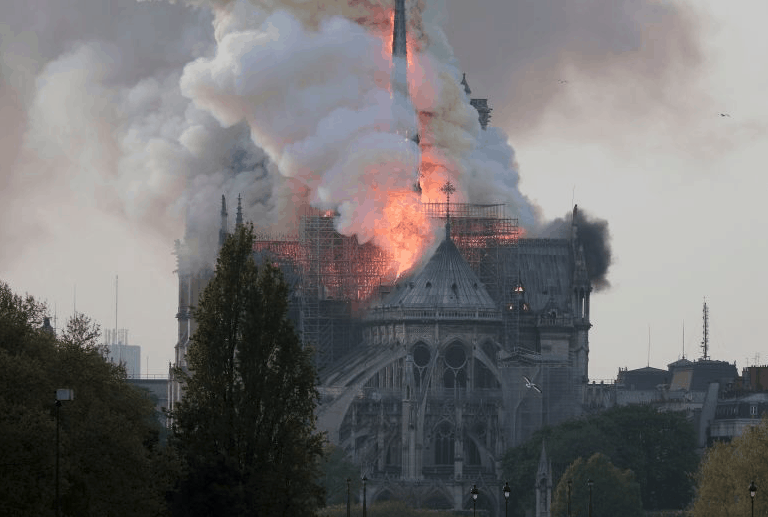Fire at Notre-Dame Near-Catastrophe

I had written a post about the fire at the Notre-Dame Cathedral in April. I discussed the preliminary information that was available at the time, and the possible Causal Factors involved.
As an update, the New York Times has published an interactive article that gives a much more detailed look at the actual events around the fire, and how close we came to losing the entire cathedral. I would consider this article a MUST READ as an example of how human error is closely intertwined with modern technology. It clearly demonstrates that implementing technology, without fully understanding human engineering and human performance, can actually be worse than just using simple, uncomplicated systems.
As you read this article, I encourage you to write down what you believe to be Causal Factors to the collapse of the cathedral ceiling. When you are done (I personally see well over a dozen Causal Factors), I want you remember that these Causal Factors are often the final “root causes” of many non-TapRooT® investigations. For example, “Security Guard went to the wrong building”, in many systems, would be considered a root cause of the incident. In TapRooT®, this is just the beginning of the analysis. We need to understand the human performance issues that allowed this trained security guard to make this mistake.
You’ll also notice throughout the article how blame is making this investigation much less effective. In fact, some of the employees have been forbidden from talking to investigators for fear of losing their jobs. This doesn’t sound like the best approach to an investigation, does it?
Here are some interesting points:
- The security guard went to the wrong building after the fire alarm.
- He had only been on the job for 3 days, on the second leg of an unexpected double 8-hour shift.
- Fire alarm system took over 6 years, dozens of experts, and over 1,000 pages of documents to put together.
- The fire message from the automatic system was almost impossible to decipher:
- “Fire, Attic Nave Sacristy, ZDA-110-3-15-1, Aspirating Framework”
- No sprinklers or fire walls (conscious decision).
- Firefighters did an amazing job, almost certainly saving the rest of the structure.
- Notre-Dame’s rector has refused to make employees available for interview, fearing for their jobs.
How many times have you seen these types of issues in your investigations? Even something as nationally sensitive as the Notre-Dame Cathedral is plagued by the same human factors issues we see every day in our companies. However, that doesn’t mean we need to live with these issues. Imagine what might have happened if an independent audit had been sanctioned last year to see how the fire response would be for an incident such as this. In hindsight, these issues are very apparent, just like many issues are at our own companies.
Don’t wait for an incident to happen at your company; the problems are right there for you to find. Make sure you are getting to human-performance based root causes during your investigations, and make sure your audits are finding the glaring problems in your systems.
ORIGINAL POST
It was gut-wrenching to watch the fire progress, live on TV. It is hard to watch so much history destroyed forever. Luckily, the firefighters did an amazing job preventing the total destruction of the structure. Initial assessments indicate the cause of the fire was most likely an electrical problem in the attic where restoration work was in progress.

So what happened? Surely there must have been a plan in place to both prevent a fire in the first place, and then to properly fight the fire afterwards. Once of our instructors sent me a link to a New York Times article that at least gives us an initial look at the fire procedures that were in place.
It’s amazing how a single initial assumption about your disaster response can change your entire incident response plan. In this case, the article indicates that there was a base assumption made that a fire in these large oak timbers would progress at a slow rate, and therefore the initial response did not have to be quick and robust. It was felt that there was plenty of time from initial discovery until fire response was on scene. Experts have since refuted this assumption. Experts are in agreement that those old timbers will burn extremely quickly, and it was pretty obvious that this was true.
In this particular case, it was 31 minutes from the first fire alarm until the fire department was called. Ask any firefighter – 31 minutes is a LONG TIME.
After reading the article, I identified several Causal Factors that just jump off the page at me. Obviously, this is not a completed investigation, but there is some good information here that would at least start off a SnapCharT. Take a look at the article, and let me know in the comments below what you think would be some of the Causal Factors in this incident.



